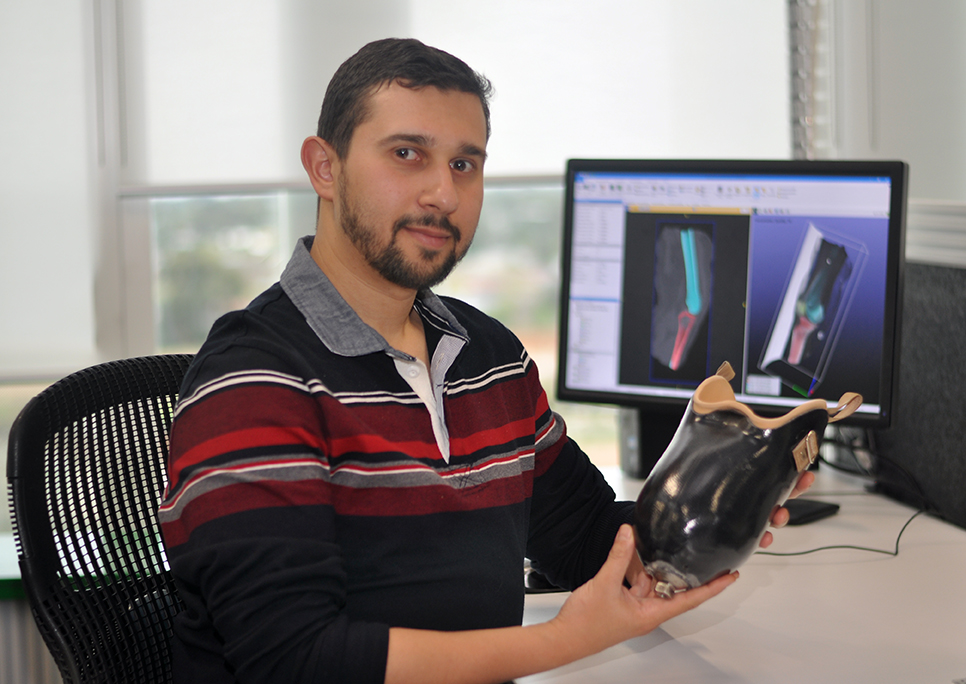Rami Al-Dirini has recently returned from his Churchill Fellowship to the UK, USA, Canada and the Netherlands to investigate advanced bio-mechanical modelling and 3D printing for personalised prosthetic design. Rami’s findings have the potential to benefit a wide spectrum of patients, including athletes, the elderly, those with osteoarthritis, diabetics, wheelchair users, and bedridden patients.
Rami’s Fellowship centered in the field of Biomechanics and Biomedical Engineering, combines cutting-edge techniques to comprehensively evaluate prosthetic designs and study bio-mechanical injuries.
Through experiments, high-resolution imaging, and multi-scale computational modeling, Rami aims to enhance existing prosthetic designs and address bio-mechanical injuries such as bone fractures, pressure sores, and ligament tears.
Rami said: “My Fellowship report is a significant step forward in advancing personalised prosthetic solutions through state-of-the-art biomechanical modelling and additive manufacturing techniques.”
Rami has forged strong collaborations with national and international academics, industry partners, and healthcare providers. Notable collaborators include orthopedic implant manufacturers such as DePuy Synthes, Zimmer Biomet, Amplitude, and 360 Med Care, rehabilitation technology providers Novitatech, regulatory body TGA – Australia, and healthcare providers including the Royal Adelaide Hospital and Orthotics and Prosthetics South Australia.
Rami’s report’s main findings highlight the growing integration of computer modelling and medical imaging in the design and development of medical devices. While technologies for prosthetic design applications are rapidly evolving, the clinical adoption of these tools for prosthetic socket design remains a goal yet to be realised. Personalised orthopedic implants are on the horizon, aided by advanced imaging techniques and 3D printing technologies, but further research is necessary to bridge the gap between design and manufacturing.
Although technology has streamlined processes for prosthetic socket design, outcomes in Australia to date have shown limited improvements. For instance, the adoption of 3D scanning has simplified the manual cast-based process but hasn’t significantly altered the overall approach.
His report sheds light on the potential for orthopedic and medical device manufacturers to harness patient anatomy and biomechanics data for more informed personalised prosthetic design.
Rami’s dedication to finding the world’s best practice in Biomechanics and Biomedical Engineering stands to transform the landscape in Australia of prosthetic design, injury prevention, and patient care.
